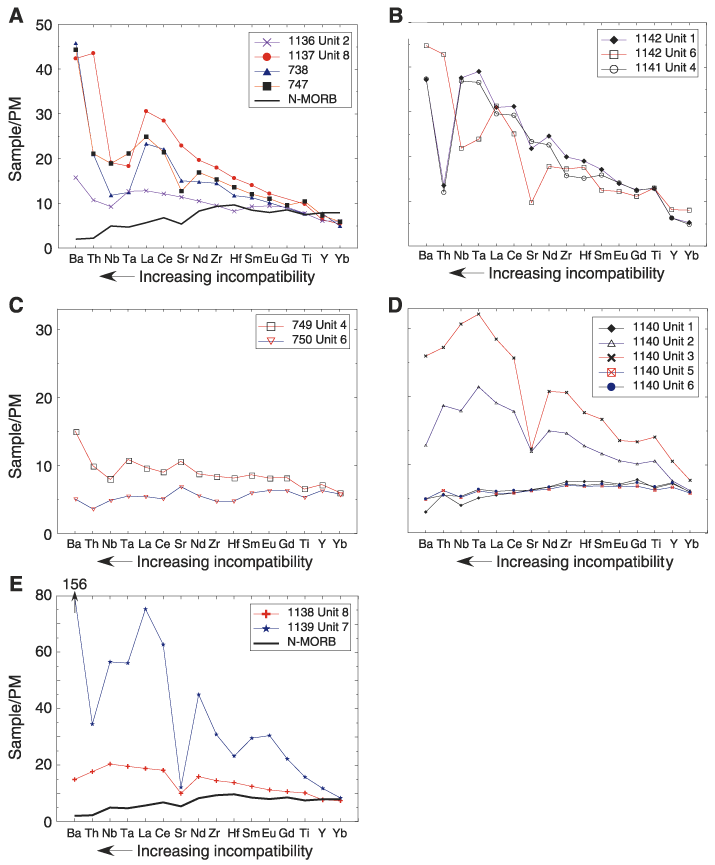
Figure F7. Incompatible element abundances in basaltic samples (MgO ranges from ~4.3 to 7.5 wt%) representing distinctive units from each drill hole normalized to primitive mantle (PM) abundances (Sun and McDonough, 1989); note vertical scale is linear. From right to left the elements are increasingly more incompatible in basalt and peridotite mineral assemblages. Data sources are Mahoney et al. (1995), Frey et al. (2002), Ingle et al. (2002b), Kieffer et al. (2002), and Weis and Frey (2002). A. Kerguelen Plateau samples inferred to contain a continental crust component. Samples from Sites 738 and 1137 show a pronounced depletion in Nb and Ta; the sample from Site 747 is relatively depleted in Nb, Ta, and Th; and the sample from Site 1136 is only slightly depleted in Nb and Th. B. Broken Ridge samples. The tholeiitic basalt forming Unit 6 at Site 1142 is relatively depleted in Sr, Nb, and Ta; the deficiency in Nb-Ta is inferred to indicate a component derived from continental crust. In contrast, the alkalic basalt at Sites 1141 (Unit 4) and 1142 (Unit 1) are relatively enriched in Nb and Ta but highly depleted in Th; this Th deficiency is inferred to be a characteristic of the Kerguelen plume (Neal et al., 2002). C. Southern Kerguelen Plateau samples that have relative abundances similar to primitive mantle. They contain no evidence for a continental component, and they have relatively high 143Nd/144Nd (Fig. F8). D. Northern Kerguelen Plateau samples from Site 1140. Like mid-ocean-ridge basalt (MORB), samples from Units 1, 3, and 5 are relatively depleted in the most incompatible elements. These samples also have MORB-like Sr and Nd isotopic ratios (Fig. F8). In contrast, samples from Units 2 and 3 are relatively enriched in the most incompatible elements and they contain a plume component. All samples from Site 1140 lack a relative depletion in Nb and Ta (i.e., there is no evidence for a continental component), but relative depletion in Sr (Units 2 and 3) reflects fractionation of plagioclase, which is present as a phenocryst. E. Typical tholeiitic basalt from Site 1138 (CKP) contrasted with trachybasalt from Site 1139 (NKP). The alkalic lavas at Site 1139 are the most incompatible element-rich lavas recovered from the Cretaceous LIP. Their Sr deficiency reflects plagioclase fractionation and the deficiency in Th, Nb, and Ta (similar to data for Site 747 in panel A may reflect a lower continental crust component. Kieffer et al. (2002) consider this interpretation, but they note that the plume source may be deficient in Th. A Th depletion also characterizes the alkalic basalt at Sites 1141 and 1142 (panel B), and Neal et al. (2002) infer that Th depletion is a source feature. N-MORB = normal mid-ocean-ridge basalt.



![]()